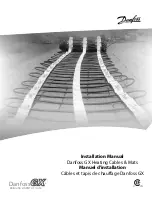
Protector P500S
15
In the event of a low battery condition, turn the Control
Unit ‘OFF’ using the OFF/ON code. Replace the battery
as required and turn the Control Unit back ‘ON’.
Note: When replacing PIR Detector batteries, fit a PP3
alkaline type. Rechargeable batteries should NOT be fitted.
For areas subject to seasonal low ambient temperatures
(eg garages, sheds etc) we recommend the use of PP3
Lithium batteries (Response Electronics Plc order code
3005B) in PIR Detectors.
TESTING THE SYSTEM
You may test your system at any time, however, it is
recommended that the system is tested at regular
intervals not exceeding three months. To set the
Control Unit to Test mode enter
at the Control Unit keypad.
The yellow ‘Test’ light will now illuminate.
Before testing areas protected by Passive Infra Red
Detectors, ensure that the area is completely clear of
occupants, including pets. Wait 40 seconds before
testing areas protected by Passive Infra Red Detectors
and also allow 40 seconds between tests. Where Two
Pulse Detection has been selected, ensure you take two
or three paces within the area to trigger the Detector.
When a Passive Infra Red Detector is activated, or a
protected door or window is opened the Control Unit
will emit a 3 second alarm tone and the associated
Zone LED will indication will be given.
On completion of testing, return to the normal Disarmed
mode of operation by entering
at the Control Unit keypad.
To test the External Siren, press and hold the
and buttons simultaneously on the Control Unit
keypad for more than 2 seconds to initiate a Personal
Attack alarm. Enter
to stop the alarm and clear the ‘Alarm Activated’ light.
MAINTENANCE
Your P500S Intruder Alarm system requires very little
maintenance. However, a few simple tasks will ensure
its continued reliability and operation.
CONTROL UNIT
The Control Unit requires no maintenance. If cleaning
is required, wipe the outside of the casing with a
soft damp cloth. Do not use aerosols or sprays or
proprietary cleaners. Do not attempt to clean inside
the Unit or allow water to enter the Unit.
EXTERNAL SOLAR SIREN
1. At least once a year, preferably in the Autumn,
the Solar Panel on the top of the siren housing
should be cleaned using a soft, damp cloth. This
operation will ensure that the Solar Panel receives
all the available light. The cleaning operation can
be combined with the general cleaning of the
outside of the house, windows etc. to reduce
maintenance time.
2. The Solar Siren incorporates tamper protection
for system security. Should you, for any reason,
have to completely power down the Solar Siren
(eg. to move the system to a new premises)
remove the holding screw at the base of the Siren
and hinge off the front cover.
WARNING - THE SIREN WILL SOUND
Disconnect the rechargeable battery and initial
power up battery.
3. The Solar Siren should not be left for long periods
with the batteries connected, unless the Unit is
able to receive sufficient light to maintain the
battery charging circuit. Failure to maintain charge
to the Unit will result in the rechargeable battery
running unacceptably low. Should this occur, the
Unit must be recharged from a 240 Volt AC/7.5 Volt
DC mains adaptor (Response order code S100TR).
When re-powering the Solar Siren fit a new 9 Volt
PP3 leak proof Alkaline Initial Power-Up Battery
to ensure that the Unit receives sufficient power
until the Solar Panel can recharge the main battery
completely.
Access Code
?
?
?
?
Access Code
?
?
?
?
Access Code
?
?
?
?







































